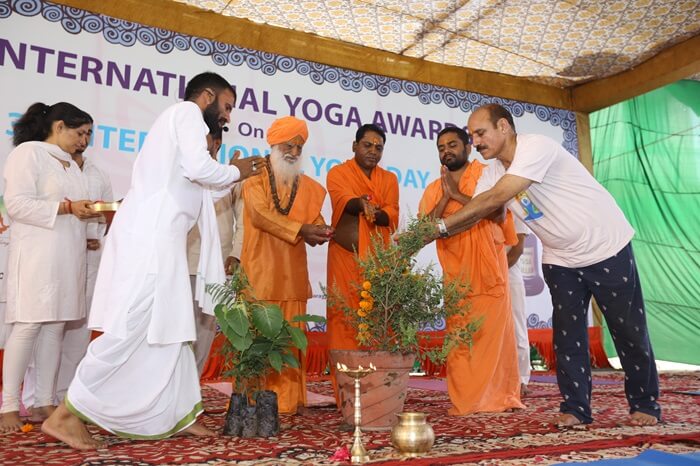Congratulations on Completing Your Yoga Teacher Training Course!

You’re likely excited to take the next step but may also feel overwhelmed and unsure of where to begin. With a clear vision, your journey to becoming a yoga teacher becomes much easier. Remember why you joined the course: to find inner peace and help others discover it too. You’ve gained significant knowledge and are now ready to turn your dream into reality!
How To Become A Yoga Teacher
Here are 14 steps to help you become a yoga teacher everyone admires:
1. Create Your Yoga Portfolio
After completing your Yoga Teacher Training, prepare a professional resume that includes:
- All your educational qualifications
- Professional teaching experience
- Work history in chronological order
- Certifications you hold
- Liability insurance
Including details on Yoga and Ayurveda workshops and classes you’ve attended will enrich your portfolio. Highlight your specializations, yoga style, missions, and overall objectives to present a comprehensive overview of your personality as a yoga instructor.
2. Register with the Yoga Alliance
Registering with the Yoga Alliance, the largest nonprofit organization supporting high-quality yoga teachings, is essential. This registration certifies you as a Registered Yoga Teacher (RYT). You can easily register through their website by following the step-by-step instructions. Being an RYT allows you to establish your own registered yoga institution and offer your training services.
3. Move Ahead In Taking Further Education
Continuing education is crucial in yoga. After completing beginner courses, consider advancing to more specialized levels or exploring additional courses to expand your skills. Our Yoga Teacher Training in Kerala offers a variety of courses and a tranquil environment perfect for deepening your practice.
4. Become Certified in Yoga Adjustment and Alignment
A certification in Yoga Adjustment and Alignment teaches you the proper techniques for perfect alignment and transitioning through poses, enhancing stability, strength, and flexibility. CPR certification is also recommended for handling emergencies, ensuring your students’ safety and boosting your professionalism. We offer a 15-day Yoga Adjustment and Alignment Course in Kerala.
5. Volunteer and Gain Experience
Gain practical experience by volunteering in yoga classes. This provides an opportunity to connect with the community, learn new skills, and grow your network. Look for yoga institutes or studios where you can substitute teach and build your confidence.
6. Obtain Liability Insurance
If your studio doesn’t provide liability insurance, purchase one to protect yourself from potential damages. It’s a worthwhile investment for those starting a yoga business or home studio.
7. Keep Up Your Day Job
Maintaining a day job initially will provide financial stability as you build your yoga career. Once your studio gains traction and you become more experienced, you can consider transitioning to full-time yoga teaching.
8. Fix Your Pricing
Start with affordable pricing when you’re new to teaching. As you gain experience and improve your services, gradually adjust your rates to reflect your growing expertise and the quality of your offerings.
9. Be Seen
Create a website or social media profiles to share your yoga insights and experiences. Use these platforms to market yourself by posting instructional videos, yoga tips, and promotional materials. This will help you reach a wider audience and establish your presence in the yoga community.
10. Connect Within The Yoga Community
Engage with yoga events, clubs, and workshops to connect with fellow practitioners. Networking within the yoga community can lead to valuable opportunities and enhance your learning experience.
11. Establish a Home Studio
Setting up a home studio is a significant step in your teaching career. Treat it with care, as it represents the beginning of your journey as a yoga teacher.
12. Never Retire From Teaching
Stay committed to teaching and continue sharing the history and philosophy of yoga with your students. Your ongoing dedication will help others become knowledgeable yoga practitioners.
13. Welcome Constructive Criticism
Embrace feedback from students and peers to refine your teaching methods and improve your skills. Constructive criticism helps you grow both personally and professionally, enriching your yoga practice and teaching.
14. Keep Practicing, Learning, and Exploring
Invest time in improving your skills, learning new yoga styles, and refining your practice. Explore different techniques and continue your education to stay current and effective in your teaching. Check out our blog on 11 Yoga Teaching Tips for more insights.
Conclusion
Starting a yoga teaching career is challenging but rewarding. Stay dedicated, patient, and persistent, and remember that success takes time. Celebrate your progress and enjoy the journey rather than focusing solely on the end goal. If you’re unsure of your next steps, Rishikul Yogshala is here to help with comprehensive Yoga Teacher Training Courses. Contact us via WhatsApp or call +91 8433225327 for guidance and support.
We look forward to assisting you on your yoga journey!















